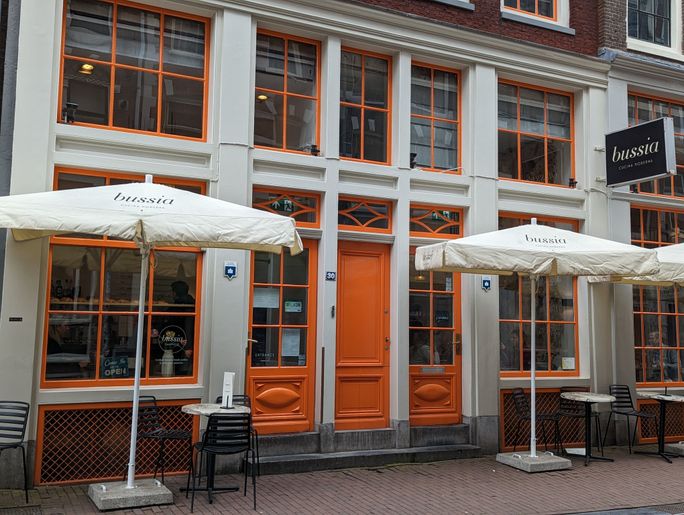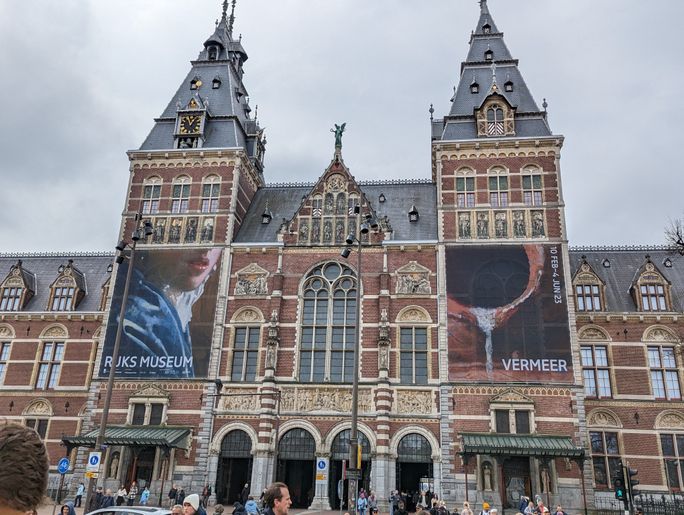 Susan Young
Susan Young
Last updated: Monday, May 22, 2023 at 7:00 AM EST

Unique architecture in Amsterdam, Netherlands (Photo by Susan Young)
No matter the season, Amsterdam is a vibrant mix of youth, music and colorful architecture. With the arrival of spring comes a beautiful mix of tulips and sunshine. Here are some basic tips to help you make the most of your time and budget in this vibrant city.
Getting around Amsterdam is easy and inexpensive. You can get around the city on foot, as long as you stay off the bike lanes. A stroll along the canal streets and bridges will easily get you through your daily step goal. But if you need a break, buy an OV-chipcard to use on trams, trains, buses and ferries for an hour, a day or longer. Public transport is easy to understand and safe to use, and bikes can also be rented by the hour or day.
Canal cruises are another way to get around, and are a great option as small boats can access canals that larger vessels can’t. Amsterdam Boat Tours offers a cruise on a small open boat, where your cruise captain will share fun facts and provide detailed commentary about famous landmarks. If you’d like to make a full day of it, there are hop-on hop-off options available.
Amsterdam’s accommodation options range from budget hostels to luxury hotels. If you have a bit more money to spare, check out the 5-star Andaz Amsterdam Prinsengracht by Hyatt. Located on the Princes Canal, this building was originally a public library and is reminiscent of Alice in Wonderland with its quirky décor and attentive service. The lush courtyard at the back will help you escape the hustle and bustle of the city.
Dining in Amsterdam is plentiful, with restaurants galore. A popular dish in the Netherlands is Rijsttafel (rice table), a feast of Indonesian cuisine once brought back from the Dutch East Indies. Mama Makan restaurant at the Hyatt Regency Amsterdam serves local favorites and vegan dishes in a plant-filled setting.

Bussia restaurant in Amsterdam, Netherlands. (Photo by Susan Young)
The city has it all: burgers and beer at Café Noir, fine dining lunches at Bussia, Latin American cuisine at Caliente Cantina. With so many options at every turn, you’ll never go hungry. And don’t miss the street food of poffertjes, Dutch mini pancakes. These sweet little pancakes can also be found at Pancake Amsterdam, which are located all over the city.
Spring in Amsterdam is a great time to visit the Keukenhof Tulip Gardens. From mid-March to mid-May, this attraction is bursting with more than seven million tulips of every imaginable color. Exhibits include the history of tulips dating back to the 17th century, as well as pavilions filled with other colorful flowers. Visitors can rent bikes, take an electric boat tour of the surrounding canals, or walk the acres of winding paths.
Within the city, Bloemenmarkt, Amsterdam’s floating flower market, is known as the world’s only floating flower market. Located on the Singel canal, the market is packed with tulip bulbs for export, flower seeds and souvenirs. The streets adjacent to the market are lined with coffee shops, cafes and cheese shops.
Of course, Amsterdam is known for its famous must-see museums like the Rijksmuseum and the Van Gogh Museum, but make sure to save time for lesser-known artistic finds like MOCO. After admiring works by Dutch masters, check out funky sculptures and street art by the likes of Warhol, Basquiat and Koons at the Museum of Modern and Contemporary Art.

Rijksmuseum, Amsterdam. (Photo by Susan Young)
At the Anne Frank House Museum you can revisit the history you learned at school about the Holocaust and the brave souls who hid there. It’s a sobering experience to climb the stairs to the hidden room behind the bookshelves in the annex where Anne Frank wrote her diary.
Be prepared for a strenuous trek up several floors and through the house back down. Tickets are essential and only available in advance online. Every Tuesday at 10am, all tickets become available for visits six weeks out.
Next to the Anne Frank House is the Westerkerk, where the painter Rembrandt is buried. The church’s tower is also known as the Westertoren and its bells are recorded in Anne Frank’s diary. The tower’s clock was also visible from a secret room. Entry to the church’s main sanctuary is free, but donations are welcome.
In the 1600s, Protestantism took over the area and took over Catholic churches and monasteries. Catholics had no choice but to hide their religious gatherings in the homes of the wealthy. The Lord in the Attic Museum displays Catholic sanctuaries preserved inside ordinary homes. It’s worth a visit to see what lies behind the walls of this typical canal-side home.
Just a 5-minute walk from the Anne Frank House is the Houseboat Museum, located on the Prinsengracht (Prince’s Canal) where you can experience houseboat life for just €5. Representing Amsterdam’s more than 2,500 houseboats, this former cargo ship was built in 1914. With an incredible use of space, it offers ample headroom, sleeping quarters, bathrooms, living areas and kitchens.
You won’t want to miss out on the classic sights, but if you have the time, check out some of the lesser known sites too. If you only have a few days to see Amsterdam, use it wisely and you won’t be disappointed.
Subscribe to the daily TravelPulse newsletter for the latest travel news, updates and deals.


